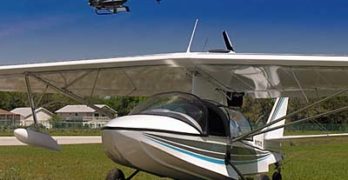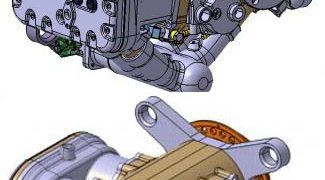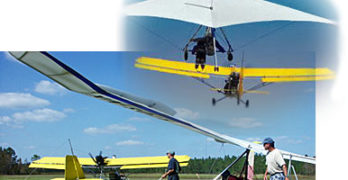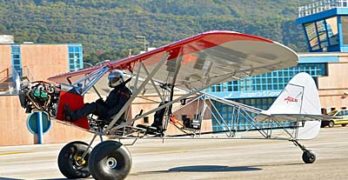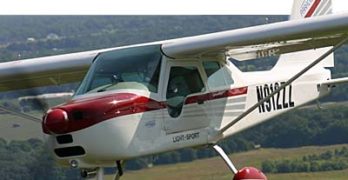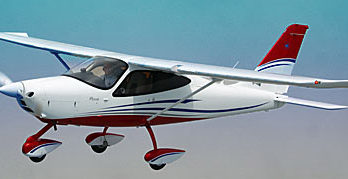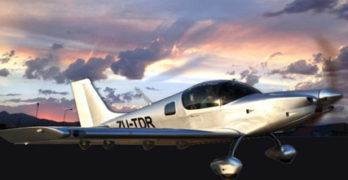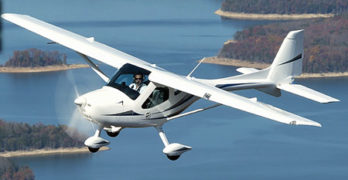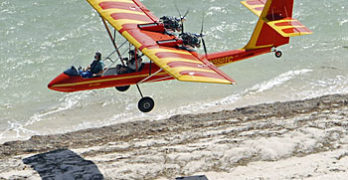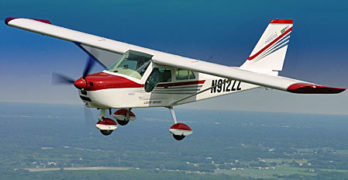Wait! “…Exports?” I realize that might look like a typo. Did I intend to write LSA imports? Nope, exports is the correct word. Back in the early days of Light-Sport Aircraft, circa 2005-6-7, the source countries manufacturing the LSA people were buying were of a high percentage European with the Czech Republic leading the charge. Their penetration of the market was approximately two-thirds of all LSA. Then came the global economic recession, which happened as the industry began to mature. All were affected: domestic and international companies and pilot consumers. Some handsome imported aircraft never found a market.
In any downturn, some managers adapt quicker to the changing economy. They find a way to offer new aircraft to keep the momentum. Neither were American companies sitting on their thumbs. European builders had a head start because the European-style ultralights they had been manufacturing were close to what FAA allowed as LSA, so many models could be rapidly adapted to meet the Yankee marketplace.
Belgium D-Motor Declares ASTM Compliance
In the world of FAA-accepted Light-Sport Aircraft, engines choices have been limited to Rotax, Jabiru, and HKS adding to updated versions from certified engine producers such as Continental and Lycoming plus the big Titan engine from ECi. Now, according to the U.S. importer, that rather exclusive club is joined by Belgium’s D-Motor, while earlier reports suggested the UL Power engine is also pursuing ASTM compliance. “We invested 500 hours testing the LF26 D-Motor from summer to fall,” said Doc’ Bailey of Renegade Light Sport, the importer. ASTM requires 100 hours testing by the airframe manufacturer before the engine can be accepted by FAA for installation on a Special LSA.
Doc’ has been in regular contact with the Light-Sport office of FAA. The agency does not audit powerplants the same way as airframe manufacturers, partly as the airframer must add to the engine builder’s testing, but it does keep track of which components the airframe maker has tested.
Working Aircraft … for the Fun of Flying
In two industry meetings held during 2014, Light-Sport Aircraft manufacturers, organization leaders, FAA personnel, and other interested parties reviewed a list of changes that would improve the 10-year-old SP/LSA regulation. Some items represent minor changes the agency could make fairly quickly. Others are more challenging. Number one on the list involves FAA allowing certain commercial LSA operations when flown by qualified pilots. Even if no great resistance exists — and reasons for optimism are present — this could be some time coming as regulation change is complicated in today’s federal government. Another area of intense interest is electric power. While unleashing development of LSA using electric propulsion also requires regulation change, an exemption might allow technical progress before rule change could occur. Recently another group with many more years of effort already invested was able to earn such an exemption. Ed Pitman of Pitman Air recently announced Exemption 11104.
Ride-On Zlin; New Variation on Theme
Thanks to powerful Cubalike airplanes — those vintage yellow taildraggers types with huge engines up front to make them perform more energetically — 2014 saw increased attention to the Savage Cub S. The Czech company offered their 180-horsepower version of the Cubalike phenomenon albeit at a more affordable price. The leading brand of Cub-like airplanes has pushed prices beyond $200,000, which strikes plenty of people as paying a premium, though most agree the design is handsomely achieved. They continue to sell well so vintage style appears to hold appeal.
Meanwhile, Zlin engineers aren’t sitting still. This company has quite a flock of intriguing models, including Savage Classic, Savage Cruiser, Savage Cub (marketed as iCub in the U.S.), Savage Cub S, and Bobber. All these are now represented in America by SportairUSA, which also imports the TL Ultralight Sting and Sirius as well as selling Searey amphibious kits among a variety of other products of services they’ve assembled.
Paradise Lands In Sebring to Start Manufacturing
Back a decade, soon to mark eleven years of operation the Sebring U.S. Sport Aviation Expo had a goal of putting the KSEF airport on the map. Doing so should attract business activity. Expo focused on the new segment of aviation — Light-Sport Aircraft — although it also included ultralights, lighter kit-built aircraft, and on occasion, conventional GA airplanes. It appears that 2014 is the year that goal was met. Sebring now claims longtime light airplane resident Lockwood Aircraft, added Tecnam of Italy in the spring with a major new facility, and in November garnered Paradise Aircraft of Brazil. The south of the equator company announced it had leased a 5,000 square foot hangar to launch their U.S. manufacturing and distribution operations. In a visit earlier this fall, Noe Oliveira told me that he was taking steps to build aircraft in Sebring for sale in the USA but also for export to other countries.
Tecnam’s Stellar 2014 … “10/90 Works!”
Italian company Tecnam has been a leading producer of Light-Sport Aircraft since the beginning of this newest aviation sector. Early distribution arrangements proved less than optimal so, like any progressive company, Tecnam retooled … and retooled again. In 2014 it appears they finally dialed in the correct lock combination. While keeping their friends at former distributor Heart of Virginia Aviation, they installed a factory presence at the top of the pyramid. A new factory-operated facility at the Sebring airport was announced at Sun ‘n Fun 2014. At the same time Shannon Yeager was hired to run the Florida center. As the year comes to a close, I called Shannon and asked for a summary of how things are going for Tecnam U.S. Inc. In particular I wanted to know how their 10% down program was working. When I first reported this, I found it a compelling answer to the concerns many American buyers have regarding the common need to send many tens of thousands of dollars overseas for an extended period of time.
LSA Taildraggers Broaden the Sector’s Appeal
Taildraggers may be among the least understood and most feared aircraft available in the LSA space … or for that matter throughout general aviation. While we have many good choices that I’ll list below, I have nonetheless heard from many readers or airshow visitors that they are uncertain about their operation of an aircraft that has no nosewheel. If you have no taildragger skills, you’ll also find it a challenge to get proper flight instruction in a “standard” aircraft. For those seeking new skills in flying, however, taildraggers may provide high satisfaction. Most who have crossed the barrier to taildragging subsequently look very fondly at such aircraft, seeing a sleeker yet gutsier, more rugged appearance. Of course, nosewheels dominate general aviation as they can be easier to land, especially in crosswinds, but once you learn the lesson of “happy feet” — or keeping your feet active on the rudder pedals throughout approach and touchdown — you may always yearn for more taildragger time.
Ownership Changes at Remos
This is one of those bad news—good news stories. The bad news for Remos Aircraft is being forced to file for what Germany calls “creditor protection” and what Americans might regard as bankruptcy. Tough times for the onetime high flying company that ran full page ads in America’s largest aviation magazines. The good news is that this is not the end of the story. A few weeks ago I heard through sources in Europe that Remos was filing documents to go out of business. In this case, the rumors turned out to be correct. However, shortly after the old company filed documents, a white knight stepped in to revive the company. This happened once before but this time the change of ownership has the experience of its predecessors. Remos AG is now emerging as the successor to Remos Aircraft GmbH Flugzeugbau. The company remains quartered in Pasewalk, located an hour’s drive northeast of Berlin.
AirCam Owners Know How to Have Fun
I’ve been on a couple AirCam outings and I have two points about them: (1) Owners of this unusual airplane are often fairly well-off people and see a golden opportunity when invited by the good planners at Lockwood Aircraft; and, (2) These pilots know how to have fun with their airplanes, flying to some delicious locations. Previous fly-outs included Jekyll Island, Heaven’s Landing, Cedar Key off Florida’s west coast, and the Bahamas. If you don’t know AirCam here’s a video that gives a bit of the flavor of this amazing aircraft. (I readily admit to a positive bias for the machine as I have had the chance to fly a good number of hours in it and earned my multi-engine rating in one … but that’s another story.)
On the two occasions when I’ve joined the AirCam’ers on their fly-outs (or is that “fly-ins?”), I’ve discovered that these folks have uncovered some wonderful places.
P1NG … Fully Refreshed from Brazil
P1NG is not a sound nor golf equipment. The clever name (that’s a “1” not an “i”) is similar to a plane you know as the Paradise P1. Now get ready for the “Next Generation” P1, or simply, P1NG. The P1 you may have already seen was designed around a four-seat model with the aft cabin simplified to a luggage space. More on the entire family of Paradise airplanes below. P1 and P1NG offer more cubic area than most cockpits in light aviation. Besides a spacious cabin the front seats remove in a few seconds allowing an occupant to stretch out fully in its length. Alternatively, P1NG could easily carry golf clubs (you probably ought to load the American Ping brand), a family pet, camping gear, or anything else that fits within the weight & balance envelope. Though absent from the U.S. market for several years, Paradise reports good business in their native Brazil, a large and aviation-active country.
- « Previous Page
- 1
- …
- 7
- 8
- 9
- 10
- 11
- …
- 64
- Next Page »


